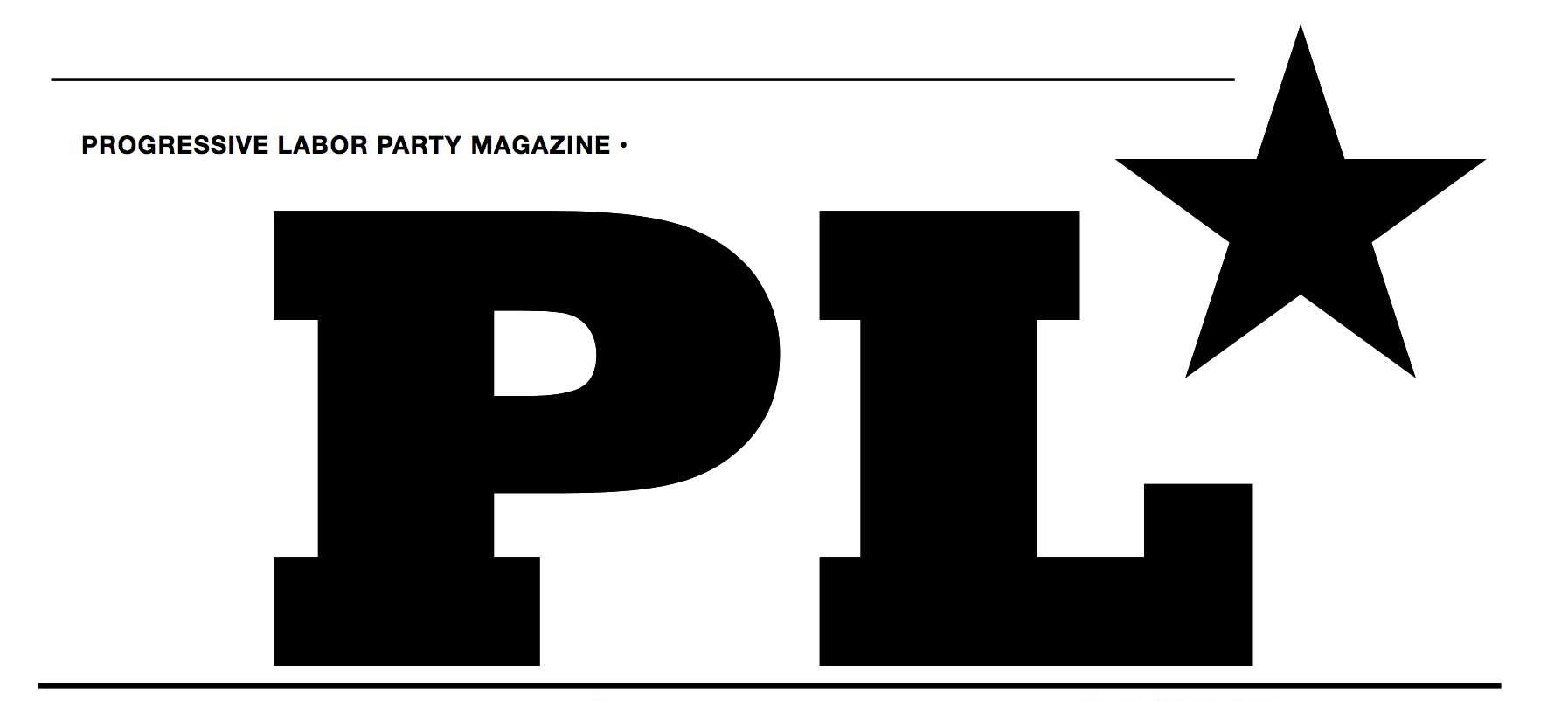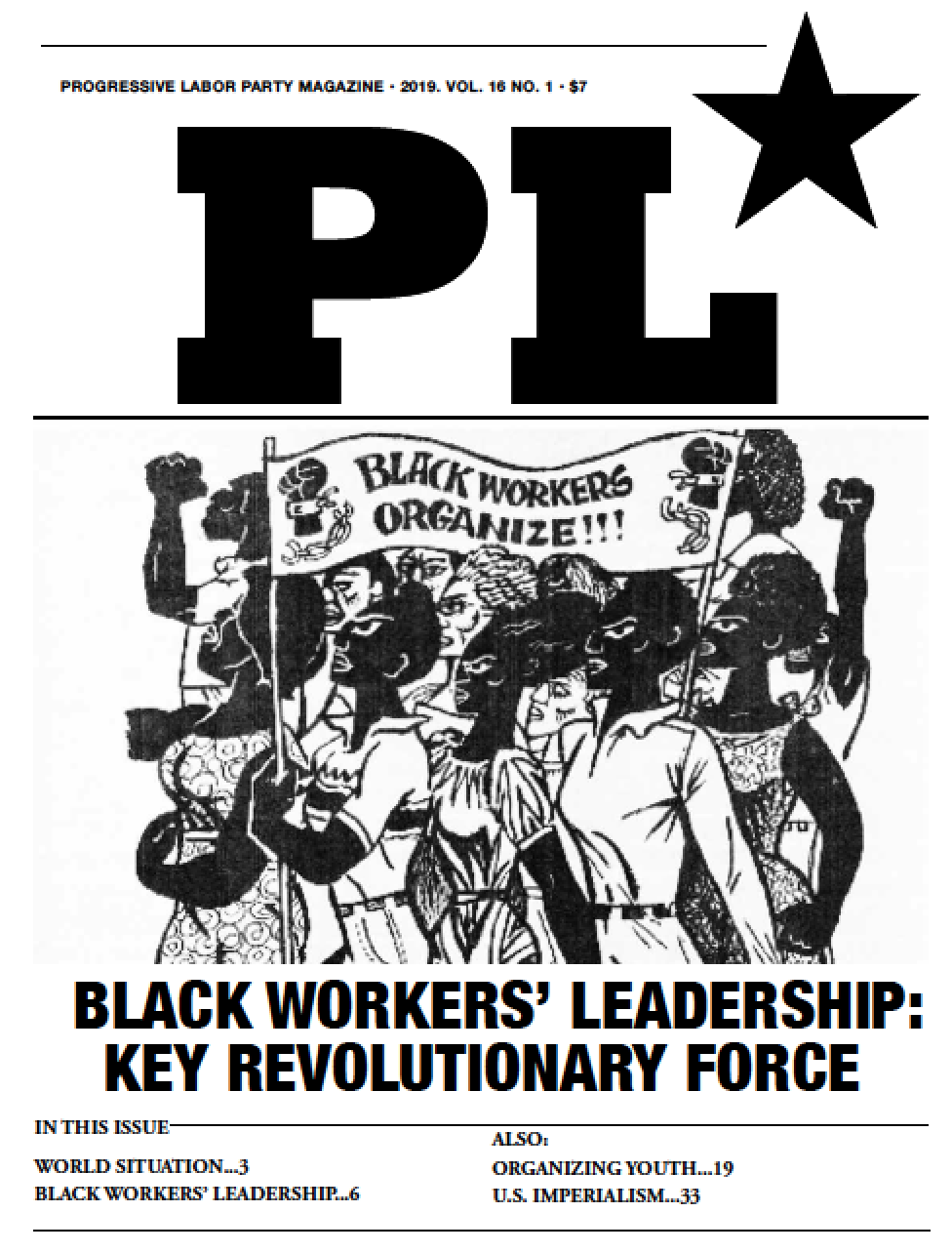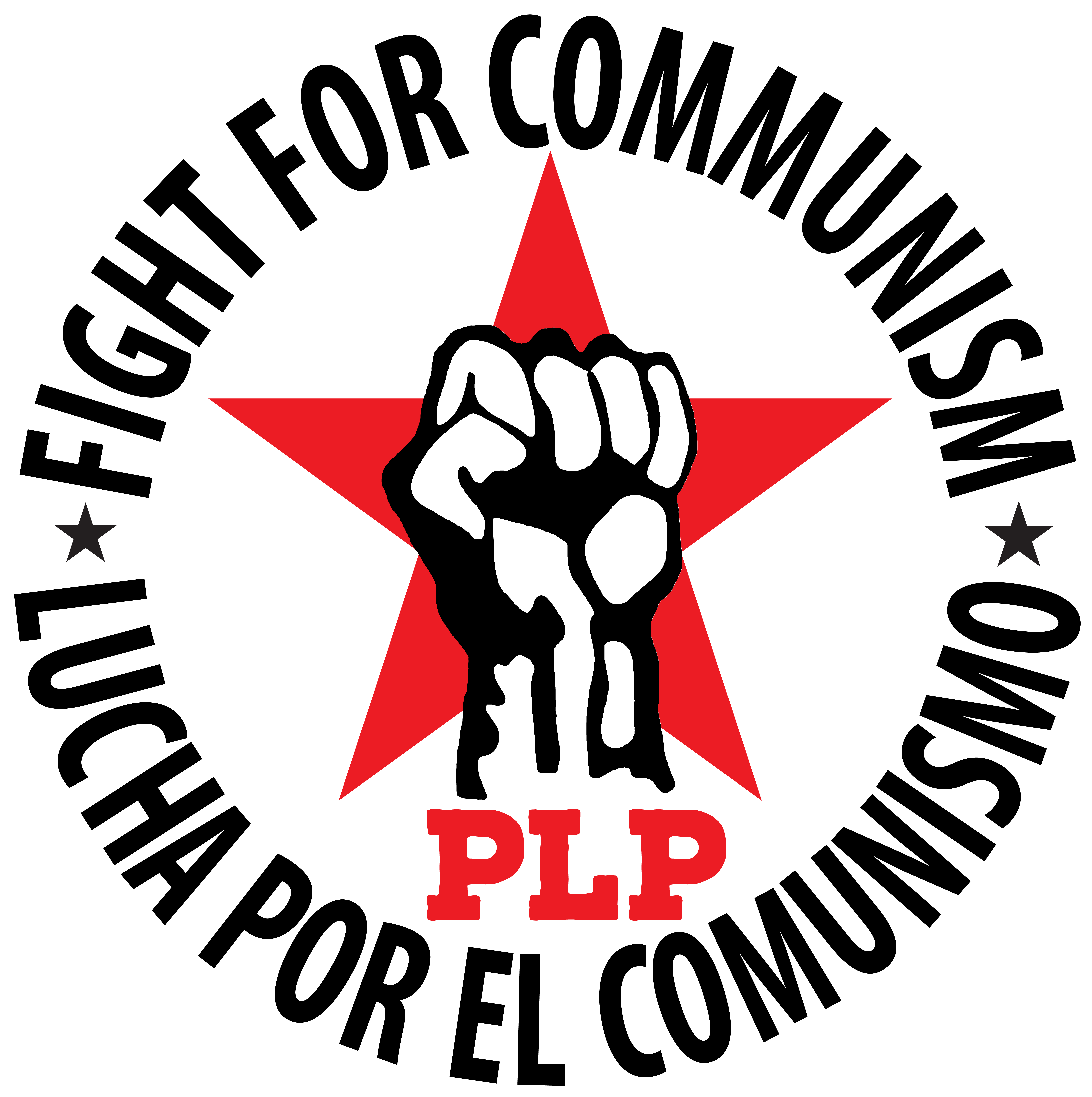Letters of April 28
 Friday, April 16, 2021 at 4:34PM
Friday, April 16, 2021 at 4:34PM Red solidarity with striking student-workers
In the last week of March, a Progressive Labor Party (PLP) club organized a group of workers and students to support a picket line of striking workers in its second week at Columbia University. Nearly 3,000 students joined in solidarity with Graduate Workers of Columbia Union after failed negotiations over a $4,00 increase to yearly stipends and hourly and salary increases to meet living wage standards, as well as better healthcare funding (Gothamist, 3/8/21).
PLP’s solidarity provided a palpable lift to the striking graduate student-workers, and we received an enthusiastic response. The strikers were spirited and their chants of “down, down, down with the bosses, up, up, up with the workers” and “we are the workers, the mighty, mighty workers” resonated with class conscious militancy.
Several strikers, as well as community residents, took CHALLENGE. We also succeeded in making some contacts.
Our PLP club also attended a rally of graduate student-workers at New York University (NYU) who are pushing for a strike authorization vote. The activity at the private institutions of Columbia and NYU serves as an inspiration to those of us struggling to replicate similar activity within our organizing work in the Professional Staff Congress (PSC), which represents the City University of New York (CUNY).
At the NYU rally, one of us from CUNY called for the PSC membership to follow the lead of these workers and forsake the 'bogeyman' of the Taylor Law, the law that prohibits public sector workers from striking to push for militant action.
In the most recent update at Columbia, we learned that, to the dismay of many militant rank and file strikers, the UAW union leadership has called off the strike, and agreed to hand over the fate of the workers to a so-called neutral mediator.
Ending a strike in favor of mediation declaws the workers and stifles the potential for developing further class struggle. Unfortunately, this has been the road pushed by union misleaders and serves as a reminder of the limits of reform. Strikes clearly build workers unity and militancy, and provide a hope to win reforms, despite their shortcomings.
Strikes also serve as schools to understand the true nature of capitalism. The class struggle provides the potential crucible to create the communist leadership necessary to destroy this racist profit system that oppresses the working class, once and for all!
Long live the working class. Long live communism. Join PLP!
*****
But isn’t China communist?
“But isn’t China communist?” a reader asked, about the April 14 editorial, “U.S. & China will make world war; workers can make revolution.”
Well, no! China has been building capitalism for the past 50 years and the Chinese Communist Party (CCP) is the state party in charge of capitalist development. During the 1960s Progressive Labor Party (PLP) was the fraternal party of the CCP. The CHALLENGE readership included many workers in China.
But in 1971, PLP published, “The Great Proletarian Cultural Revolution and the Reversal of Workers’ Power in China,'' broke ties with the CCP, and concluded that China turned away from communist revolution as early as 1959. The right-wing of the CCP (including Mao Zedong himself) defeated the leftwing. The tragedy of this reversal (as in the Soviet Union) showed PLP that socialism has led back to capitalism, not forward to communism.
The article examines the practice of 30-40 million Chinese leftists in the Cultural Revolution, published in writings like Whither China? (https://tinyurl.com/f5abbtpf).
If it was not clear in 1959 that China had left the road to revolution, then it was crystal clear in 1968 when Mao used the People’s Liberation Army (PLA) to crush the Cultural Revolution; and there was no longer any doubt by 1978, when Deng Xiao-Ping’s “reform” saw the CCP turn 100 percent to building capitalism (“To get rich is glorious”).
The result we see today, a combined state and private capitalist system, challenging the U.S. imperialists and headed to the full imperialist stage of its development.
“The Great Proletarian Cultural Revolution and the Reversal of Workers’ Power in China” is essential to understanding PLP’s position that capitalist China is the most powerful emerging imperialist world power, on a collision course with the U.S.’s declining racist empire. As the U.S. and China move closer to World War, we should prepare for a long political struggle with those who believe that China is still socialist, or that China is a lesser-evil capitalist, or that any enemy of the imperialist U.S. is our friend.
The Chinese Revolution and its defeat are among the most important historical events for revolutionaries to study and comprehend. China was once the center of world revolution, an inspiration to billions! Our communist comrades destroyed feudal society and abolished the entire landlord class. They expropriated private capital. In the great advances made by the left in the Party—from the war communism of the PLA, through the Great Leap Forward and the Rural People’s Communes, and up to the Cultural Revolution—millions of our Chinese comrades showed the world that rural and urban workers could take the reins of power and violently destroy capitalist exploitation and oppression.
This document is energizing to read, and we encourage everyone to join in this discussion. Once you get started, also try reading Dongping Han’s The Unknown Cultural Revolution, a first-hand account of the Cultural Revolution.
*****
Watch inspiring film against fascism
I recently watched the wonderful 1945 Italian film Rome, Open City.
It is set in Rome during the nine-month brutal occupation of that city by the Nazis. The protagonists are a communist leader of the resistance, Georgio Manfredi, his comrade Francesco, and Francesco's fiancée Pina. There is also a group of boys (kids) who have taken up the fight on their own, and a sympathetic Catholic priest, Don Pietro. They are supported by many other working-class people who hate the Mussolini/Nazi regime.
On the other side are a cruel Nazi investigator, his staff and the German army, and a couple of weak people who are corrupted by the Nazis.
The movie is one of the first and finest examples of neo-realism. Immediately after the Second World War a number of Italian filmmakers produced groundbreaking movies that focused on the lives of ordinary people.
Decades ago movies like this were of course much harder to see. Rome, Open City would appear every few years in one Manhattan "Art House". When it came around Milt Rosen, one of the Party founders and at the time chairperson of Progressive Labor Party, would organize family and friends to go see it. Milt had been a young soldier in the U.S. Army in World War II and had been part of some of the hardest fighting in Northern Italy. When the movie ended, Milt would stand up and say "These things happened. I was a 19-year-old in the U.S. Army there. If it had not been for the Partisans who constantly helped us we wouldn't have gotten anywhere!"
I always find it inspiring to see some of the movies that came out during or right after World War II when the experience of Nazism/Fascism was so recent and so many people had been involved in the struggle against it.
*****
Criticisms of Langston Hughes piece
I commend CHALLENGE for putting the spotlight on the great Langston Hughes, whose class-conscious poetry remains a source of inspiration for communists everywhere (see CHALLENGE, 03/3, 3/17, and 3/31).
However, I have a few comradely criticisms of the three-part feature on his life and work. While it’s true that Hughes was part of the crew of “Black and White” in 1932, the reason that this Soviet movie about race relations in the U.S. South got canceled was not that FDR saw “the Soviet Union in the film footage” (CHALLENGE, 3/3).
Rather, it was that Hugh L. Cooper, an American engineer overseeing the construction of a major dam in the Soviet Union, refused to complete the project unless “Black and White” was abandoned. At a time when the Soviet Union was struggling to industrialize, Cooper’s demand was especially nefarious.
CHALLENGE justly observes that Hughes remained a leftist well after the 1930s. But a good deal of his 1940s work displays a problematic mixture of left-wing populism and U.S. nationalism. Hughes’s contradictory move toward the center was likely due to the CPU.S. A’s lack of leadership on racial matters during its “win-the-war” period (1942-1945). At this time, the Communist Party was intent on defeating the fascist menace overseas, even if it meant downplaying the antiracist struggle at home. Thus, it is simply not true that – as the feature suggests – “Black workers and communists advanced the ‘Double V’ goal” (CHALLENGE, 3/3).
Finally, the CHALLENGE feature displays a somewhat undialectical stance toward the Harlem Renaissance. The Renaissance crystallized different visions of Black liberation throughout the 1920s. Part one celebrates 1920s Harlem as a “dynamic center for culture and politics” (CHALLENGE, 3/3), while part two implies that the Renaissance was an identity-based movement that called for Black pride (CHALLENGE, 3/17). Neither formulation captures the ideological complexity of the movement, which at times espoused pro-socialist ideas and at times promulgated culturalist and nationalist conceptions of politics and identity. Hughes’s 1920s poetry exhibits these contradictory tendencies.
All in all, however, the CHALLENGE feature was excellent; I look forward to reading more articles on communist culture.
*****





 Progressive Labor Party (PLP) fights to destroy capitalism and the dictatorship of the capitalist class. We organize workers, soldiers and youth into a revolutionary movement for communism.
Progressive Labor Party (PLP) fights to destroy capitalism and the dictatorship of the capitalist class. We organize workers, soldiers and youth into a revolutionary movement for communism.




Reader Comments